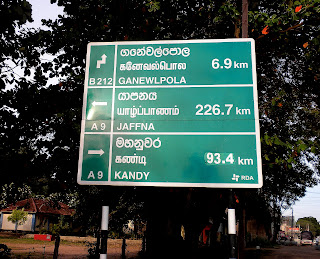“Isn’t there …… a zoo?” I asked. Surely every city has a zoo?
Lankesh seemed reluctant. “There’s a very nice Buddhist temple, Mum.”
I thought I had done my Buddhist temple duty on this trip. After lunch we were off to the zoo in Dehiwala.
I soon learned the reason for Lankesh’s reluctance. The Dehiwala Zoological Garden is an old Zoo. It was founded in the 1920s by John Hargenberg who kept this 5 acre (about two hectare) area for animals that he sold to circuses and, enterprisingly, opened it to the public so they could see the exotic beasts before they were shipped away.
In 1936 the government took it over from the German Hargenberg family and opened it as a Zoo in 1939. Like many old zoos, it now seems rather sad and scruffy. The animals are kept in small cages

and their habitat is far from natural. Lankesh told me that they had almost finished a, modern zoo near the Elephant Orphanage at Pinnawala, about 90 km (55 miles) away. That will be better for the animals and tourists – though the Sri Lankans who live near Colombo won't be able to enjoy it as easily.
Before I became too disappointed, I realized that my afternoon visit was an excellent resumé of my whole Sri Lankan experience.
First of all, though Sri Lankans only pay 100 rupees to visit the Zoo (50 rupees for children), foreigners are charged a whopping 2000 rupees (14 euros or about $18 US). This was the biggest price differential I had seen,though foreigners are always charged more. Since we also earn a lot more than the average Sri Lankan, this never bothered me though I heard other tourists complain.
There were lots of visitors at the zoo that afternoon – mostly women and children. Very young children get out of school at noon and the older ones at 1:30 p.m. so they came as no surprise. And Lankesh had explained to me with pride that “Sri Lankan women don’t work.” (meaning those who have husbands like him who earn a decent salary). I assumed the women I saw fell into that category. I saw, however, no other westerners. Soon, I felt like I was the main attraction. Children were still more interested in the pygmy hippos.

If they noticed me at all, they giggled or stared a little apprehensively. Not so the teenagers and adults. “Hello! Where you from?” they called. Except for one woman who asked curiously “Why you alone?” I had learned by this time that Sri Lankans find a woman alone curious and somewhat unsettling. Other single tourists and I discussed laughingly in the evenings how we had recklessly invented absent husbands and children to put them at their ease.
While staring at the tiny mouse deer

I heard a gentle voice say “Group photo?” A smiling young woman, visiting the zoo with her friends wanted a special souvenir. I complied and several cameras were produced. Afterwards, I said “Now me.” and held up my own camera. So we all have souvenirs

Near the sloth bear’s cage

a woman gestured to me to take a photo of her and her children – a souvenir for me, if not for them.

Later, as I made my way to the exit, an entire class from a Muslim school, waiting to go in, waved excitedly.

A small taste of celebrity on a sunny afternoon.















































